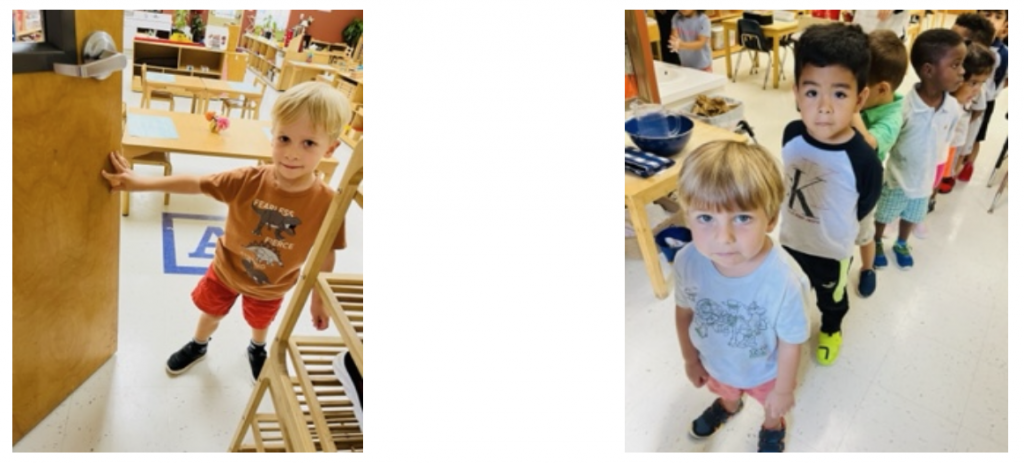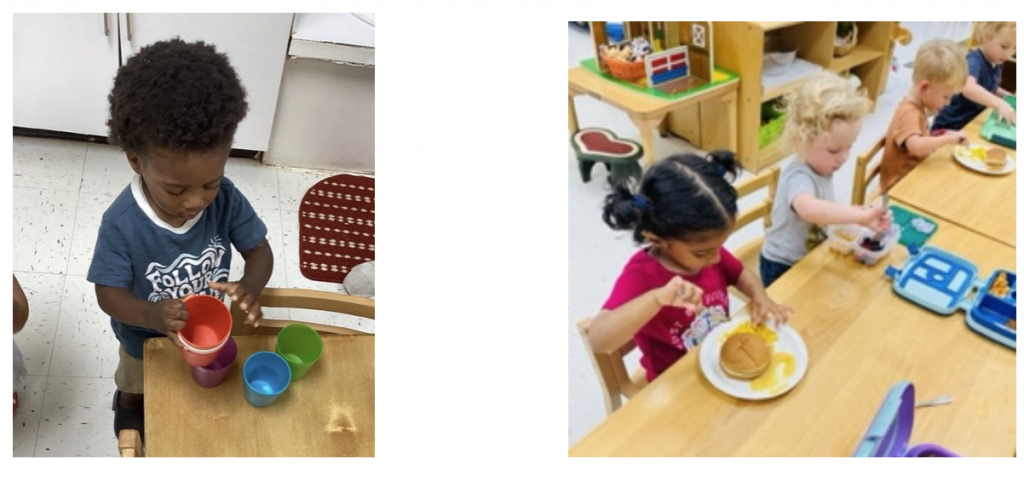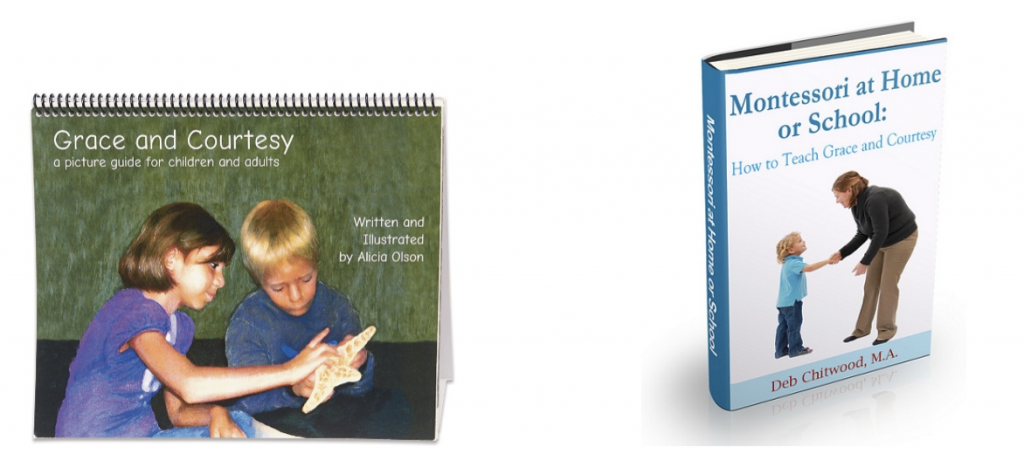What does it mean? It is a way to speak to someone kindly and politely. To show others respect and empathy.
Grace and Courtesy is a lesson in the Practical life area. During the training, the adult learners are taught this lesson. In the classroom, it is first modeled by a teacher, but some lessons are taught. The teachers will often invite groups of 3-4 students to engage with them to learn something new. During this time, the teacher will show a step-by-step explanation of Grace and Courtesy first and then have the children role-play.
Grace & Courtesy are a part of Practical life and make the Montessori classroom exceptionally unique. It is how the teachers in the classroom model the appropriate behavior and guide the children.
Some examples of Grace and Courtesy lessons are:
- Raising a hand to ask a question
- Standing in a line patiently
- Using materials appropriately
- Closing the door quietly
- How to observe someone else’s work without interrupting
- How to be polite or use please and thank you
- How to follow directions
- How to resolve a conflict
- How to do kind things for others, such as holding open doors
- Welcoming a visitor
- Waiting for their turn

- Choosing a work
- Walking feet in the classroom
- Use of quiet voices
- Hands to self
- Respecting other’s space
- How to set up the table for eating
- Carrying the school bag on the shoulder
- Greeting friends and teachers
- Sitting down by crossing legs
- Sitting on a chair properly
- Using table manners
- How to introduce family, friends, and acquaintances
- How to actively listen during a conversation
- How to get the teacher’s attention without interrupting the whole class

Picture courtesy of SSMS students
How it applies to older age:
Grace and Courtesy is more focused on children at the Primary age, but it is as important for the older children. Because they are different from younger ones in a couple of ways:
- Grace and Courtesy needs are important for making and maintaining relationships with family and friends.
- It helps with having smooth and mature social/emotional interactions.
- Children eventually develop their sense of humor and learn which behavior is appropriate.
Example: If the teacher notices that an older child is misbehaving or having a conflict with a friend, then she is going to intervene and talk about it. She will then role model the appropriate behavior and then encourage them to talk about the problem and come up with a solution.
The teacher or another adult must discuss different scenarios, such as snatching things from others, pushing people to go up the line, running to get a seat on the school bus, throwing the school bag, etc., and asking what is wrong in each scenario. The adult in the room will then have the children model the correct behaviors and then do the same thing repeatedly for good practice.
It’s all around us: Grace and Courtesy lessons can take place everywhere. It could be at home, in the classroom, in a grocery shop, on play dates, or at the park.
Helpful books:

“In the education of a child, the acquisition of grace and courtesy is even more important than the fundamentals of reading, writing, and arithmetic.” – Maria Montessori.
“When we teach children about grace and courtesy, we are nurturing the foundation of a harmonious and compassionate society.” – Unknown.
By Harneet Soor
September 12th, 2023
